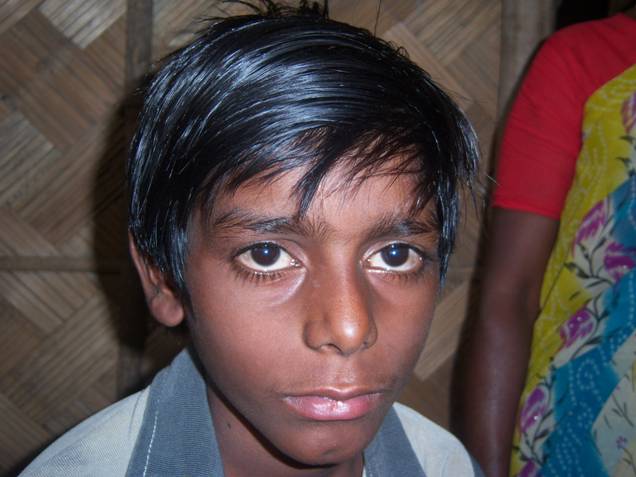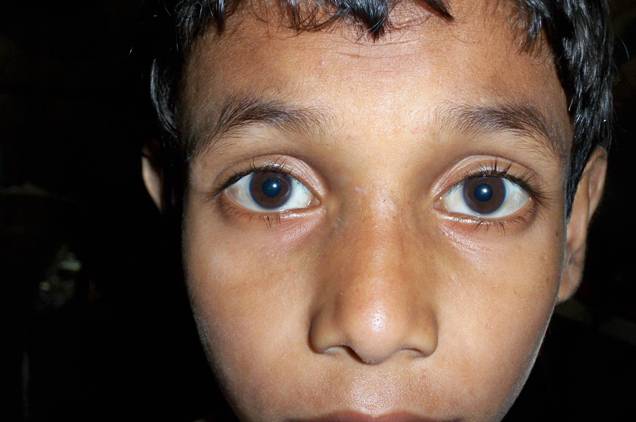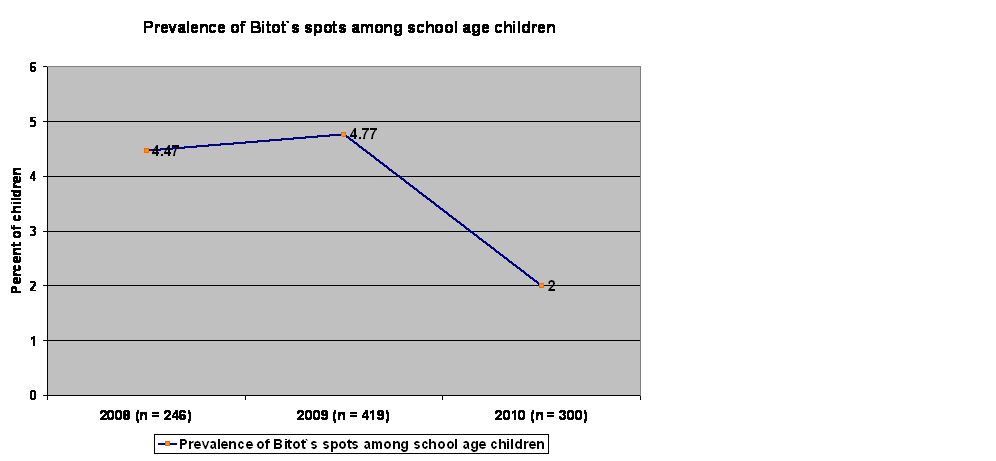 |
|
howrahtb
|
|
Vitamin A deficiency school age children The extent of Vitamin A-Deficiency among mothers and children in southern West Bengal, India, is not well known. A level of Vitamin A-Deficiency that reaches public health significance would have implications for health care programmes for mothers and children in this area. To get an impression of the prevalence of Vitamin A-Deficiency in the area in which the primary health care programme of our NGO operates, we examined the subgroup of the school age children (6 – 10 yrs. of age) attending our primary health care centers for the presence of Bitot`s spots. Among 965 consecutively examined children of school age, 37 (3.83 %) had Bitot`s spots.
The reason for this relatively high frequency of Bitot`s spots among the children of school age is not clear, although similar observations have been made earlier by other investigators. One explanation might be, that Bitot`s spots become chronic the older a child gets and the longer it has been vitamin A deficient. Eventually, a group of children will retain their Bitot`s spots even after their vitamin A deficiency is corrected. They might develop a localized epithelial metaplasia that has become independent of its source; like a carcinoma in situ. Treating the child doesn’t make it go away because it is now a permanent metaplastic change. The older the group of children, the more likely this might be the case (A.Sommer, personal communication).
The graphic underneath shows the trend observed in the prevalence of Bitot`s spots among school age children in the years 2008 – 2010.
Furthermore, this was not a door-to-door-survey of the resident population of the selected poor areas, but a survey among children brought to primary health care centers for various ailments, which were mostly of minor severity. Results may therefore not even be representative for the overall population of the selected poor areas. However, it is useful to know which extent of Vitamin A-deficiency can be expected among school age-children attending primary health care centers in impoverished areas of southern West Bengal. 1 – Singh V, West KP. Vitamin A deficiency and xerophthalmia among school-aged children in Southeastern Asia. Eur J Clin Nutr 58: 1342-1349
|
Copyright © 2010-2015 - www.howrahtb.com. All Rights Reserved
Site best viewed in IE 7 (1024*768) and above. If you have an older version of Internet Explorer, please upgrade your browser.


